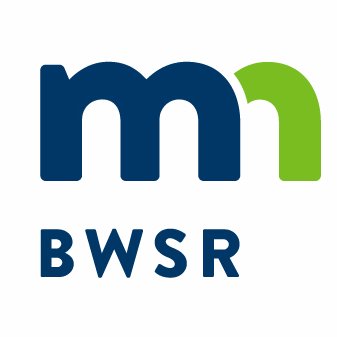St. Paul, Minn. – The mission of the Minnesota Board of Water and Soil Resources (BWSR) is to improve and protect Minnesota’s water and soil resources by working in partnership with local organizations and private landowners. In 2014, those partnerships resulted in projects that are making a difference for Minnesota’s natural resources.
“With state support, our local government partners have done tremendous work to target projects and implement practices that will make progress toward our natural resource goals,” BWSR Executive Director John Jaschke said. “While change doesn’t happen overnight, the work done in 2014 helped move Minnesota closer to cleaner water and healthier soil.”
Improving Water Quality through Strategic Local Investments
The health of our water is a direct reflection of how we use our land. BWSR’s appropriations from the Clean Water, Land & Legacy Amendment fund on-the-ground conservation projects implemented locally. BWSR awarded $14.5 million through 102 competitive grants in 2014. These projects provide multiple benefits for water quality and wildlife habitat and are estimated to provide a reduction of 18,000 tons of sediment and 18,000 pounds of phosphorus per year from entering Minnesota waters.
Changing the Water Planning Paradigm
In June 2014, our Board approved five pilot projects to start One Watershed, One Plan, a new approach to local water planning. Instead of planning along county lines, local governments work together to plan along entire stretches of streams and rivers, making better connections and decisions about how to manage our water priorities. It’s a holistic approach being tested in the Red Lake River, Lake Superior North, North Fork Crow River, Yellow Medicine River, and Root River watersheds.
Our Targeted Watershed Demonstration Program also kicked off in 2014. This program focuses on watersheds where the amount of change necessary to improve water quality is known, the actions needed to achieve results are identified, and those actions implemented within a four-year time period. $11.1 million in grants were awarded to seven projects located throughout the state.
Permanently Protecting Critical Lands, Benefiting Water, Soil and Wildlife Habitat
The Reinvest in Minnesota (RIM) Reserve Program is a critical component of the state’s goals to protect and improve water quality and protect and enhance wildlife habitat through permanent easements that remain in private ownership. In 2014, BWSR acquired 238 easements protecting almost 10,000 acres through the program. For Minnesota, that means land that’s permanently protected, providing better habitat and water quality improvements. That’s thousands of acres for native plants to grow, pollinators to thrive, and habitat for pheasants and other wildlife to call home.
Training today’s conservation leaders – and the leaders of tomorrow
2014 marked the sixth year we offered statewide training to local conservation professionals through our BWSR Academy. Over 400 participants took part in the annual event, which offered a variety of sessions to help local government staff build on their skills and learn from their colleagues around the state about what’s working best in Minnesota conservation.
We’re making sure our future workforce has the skills they need to navigate tomorrow’s natural resource challenges by learning from the conservation experts of today. Our partnership with the Minnesota Conservation Corps to implement a summer apprenticeship program entered into its fourth year. Thirty-seven students gained on-the-job training working side by side with conservation professionals in local soil and water conservation districts.
For more information about BWSR and its programs, please visit www.bwsr.state.mn.us.

